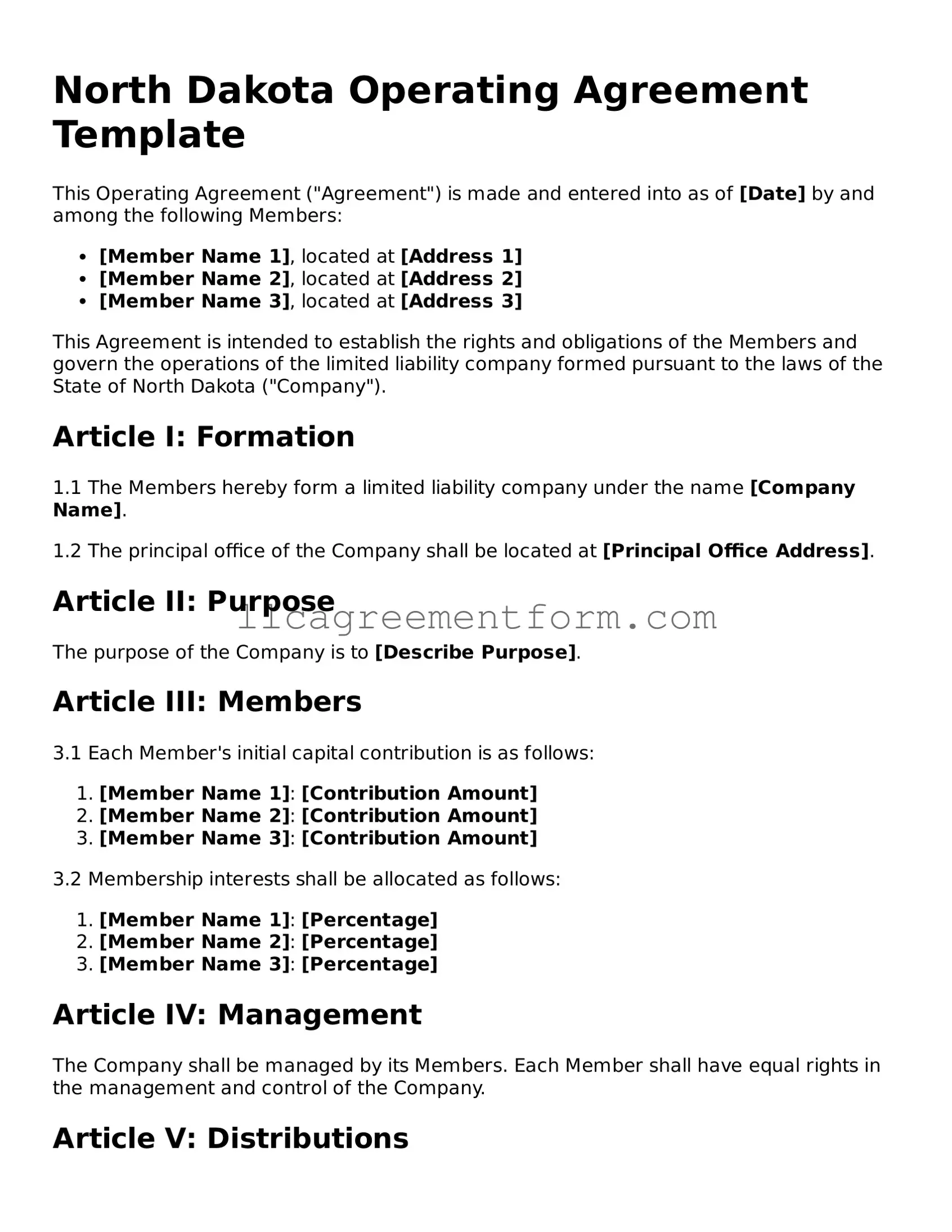When it comes to forming a business in North Dakota, having a solid foundation is key, and that’s where the North Dakota Operating Agreement comes into play. This essential document outlines the structure and operations of a limited liability company (LLC), ensuring that all members are on the same page from the start. It typically covers crucial aspects such as ownership percentages, management responsibilities, and the distribution of profits and losses. Additionally, the agreement can address how decisions are made, what happens if a member wants to leave, and how new members can be added. By clearly defining these elements, the Operating Agreement helps prevent misunderstandings and disputes down the road. It’s not just a formality; it’s a roadmap that guides the business through its journey, providing clarity and protection for all involved. Whether you’re a seasoned entrepreneur or just starting out, understanding the importance of this document can make a significant difference in the success of your venture.
